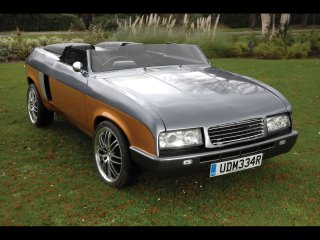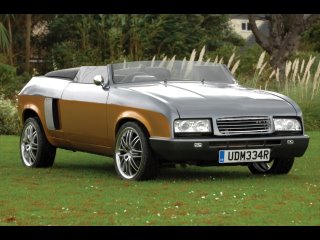The Lincoln Vintage Vehicle Society
Over the years, those self same vehicles occasionally popped up on my radar to reinforce the pioneering status of the LVVS. Visiting the LVVS museum was something of a pilgrimage and I was at last able to see the work of this happy band of preservationists for myself in a snug modern building on the outskirts of the city.
Phrases like "in preservation", "preserved" and "rescued for preservation" ran throughout the Blandford book of buses and my youthful mind conjured up members of the LVVS throwing themselves in front of slavering scrap men. Preservation sounded like a sanctuary for worthy things. But not every worthy thing lasted long enough to be appreciated before those slavering scrapmen - today we call them recyclers - did their dirty work.
The Lincoln Vintage Vehicle Society was founded back in 1959 as a small network of like-minded enthusiasts who wanted to save some of the old buses that at the time were coming to the end of their working lives. They had a little money and a certain amount of space but tremendous enthusiasm for the vehicles of yesteryear. It was their enthusiasm that outweighed the problems. It wasn't a question of value, either. These old wrecks were worth nothing but scrap value and were not yet curiosities. The members of the LVVS simply liked these old buses and coaches so much that they couldn't bear to see them disappear. To most of their contemporaries they must have seemed quite mad. Nowadays this sort of behaviour is almost acceptable and the vehicle preservation is big business but back then it was just inexplicable, laughable almost.
Not to people like Vincent LeTall, Sid Twell or Bryan Challand they weren't. Individually they might not be able to buy an old bus and get it home but together they pooled their resources and managed to get them working again.
Bearing in mind what buses were available back then it must have been like having the keys to the sweet shop.
The LVVS quickly set the standard for renovation with its first restoration and continued to raise the bar with every subsequent one. High quality cosmetic states weren't enough, The old buses had to go, too.
The earliest members thought big right from the start. It wasn't just the size of what they chose to restore - it was the scope of what they set out to achieve. They wanted a museum to put all their Vintage Things in and after 3 or 4 years had a three acre site including dry storage. One old bus, an ex-Lincoln Corporation Leyland Lion that had been rescued from Jersey, of all places, was dry stored for 25 years until it was restored as part of an apprentice training scheme. Their attitude was very much save it now, store it and look after it somehow until eventually we'll get around to finishing it.
That's exactly my approach!
Vincent Le Tall also collected Austin motor cars and his collection formed the nucleus for a car collection that's still growing and includes a 1936 18, a 1928 10/4 and 1934 16 Berkeley saloon that once ferried Wilfred Pickles to and from his hotel in the Lake District.
Regular readers will know I have a lot of time for Ford flathead V8s but this woody is a peach. The bodywork is handbuilt and fortunately was in good condition. Rust of the steel body panels was more of a problem so the body had to come off the chassis - welding and wooden structural members don't mix. As usual with LVVS projects, the result was well worth it.
It wasn't long before other items for the collection began presenting themselves to the LVVS and some of them were in very good condition.
But if you quietly take something apart and begin to restore it often people complain. It is apparently socially unacceptable and can result in the Vintage Thing itself being scrapped despite the initial best intentions of the owner and enthusiast. But thanks to organisations like the LVVS, the benefits of this initially aberrant behaviour are gradually being realised.
Car restoration is quite different from merely car collecting and much more time consuming. Actually bringing some old piece of machinery back from the dead is far more rewarding although not in monetary terms (not something many car collectors understand). The LVVS members might not have been able to justify the expense either under severe cross examination but that never stopped them.
But commercial vehicle collecting is even trickier. Once you've got them, they're so much bigger and require special skills.
Some of the trucks from the early thirties had massive petrol engines instead of the big loyal diesels commercial vehicles have today. This 5-litre straight six powered a Leyland fire escape. I was expecting it to be a sidevalve but it's actually overhead valve and it's rated at only 33 horsepower although I reckon this is the RAC rating. This fire engine would do 55 mph despite weighing nine and a half tons. Petrol consumption was 6mpg. I can't help wonder what this engine could do in a contemporary sports car chassis. Maybe someone in the VSCC could try this?
I also liked the AEC Monarch tipper truck in the livery of Bracebridge Mental Hospital. It wasn't actually used for carting loonies around - it was for the coal used to heat the hospital - but I understand that some people have raised objections to this truck appearing in its original livery.
I got talking to the lady behind the desk and she said they use the old buses on services through the city of Lincoln when they have open days in November and at Easter when the workshops to the museum are also open. (Now that would be interesting.) On that day, they will have 25-30 vintage buses in operation around Lincoln. Cornwall's a bit far but I admit I'm tempted. I didn't see anything of the city itself and to see it from the top deck of a globe trotting bus probably can't be beaten.
The LVVS made the headlines in 2007 when they bought an Allegro for 1500 quid. The media latched on to what they called "Allegromania" and adversely criticised the LVVS for alledgedly wasting money but in view of the numbers destroyed on Top Gear it's probably more historic than ever. And it was LVVS money so none of The Sun's business. I've said it before and I'll say it again (Vintage Thing No.23) - the Allegro is a much maligned car so I was surprised but pleased to see one here in Lincoln. What do the media know, anyway? It was also in very good condition.
So what was the vehicle that I would like to take home with me most of all? That Ford V8 woody. I told them so, too, but they said I couldn't have it. I don't mind. I reckon it's in better hands.
Labels: AEC, Albion HD55, Austin Allegro, Leyland Lion, VSCC





